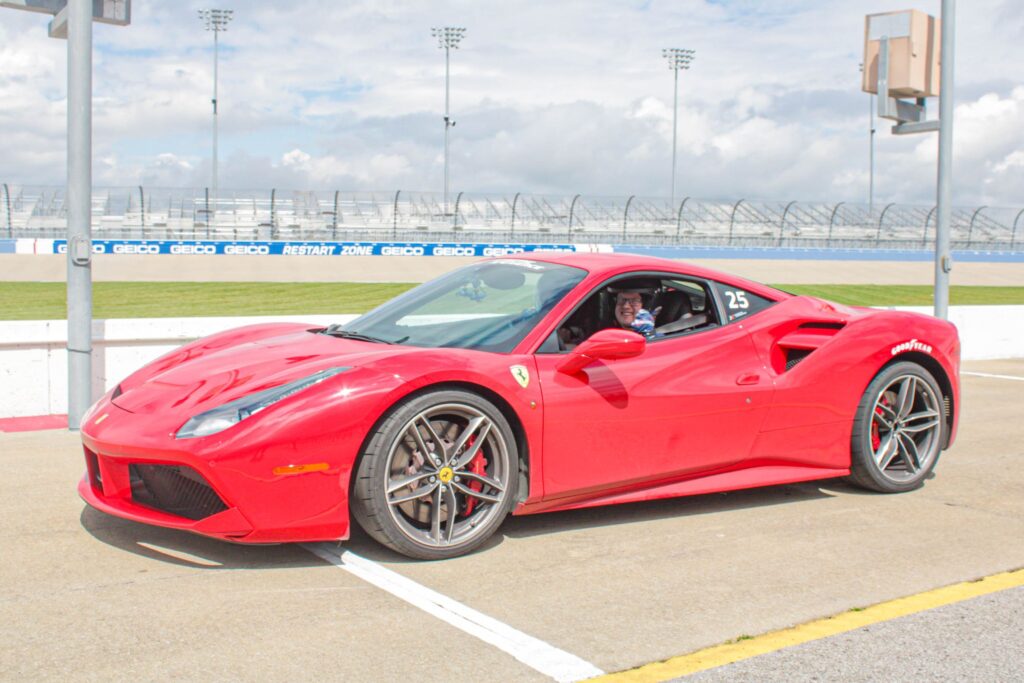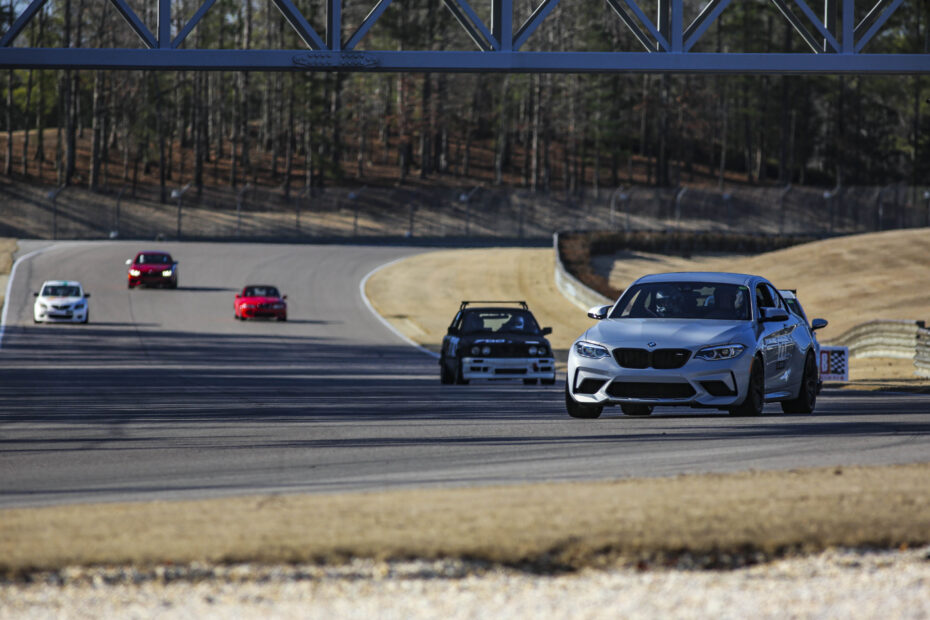Introduction
I love to go fast and compete. I seem chill to most people, but when they see me in competition, I become a different person. My now-wife saw me play soccer in college and said, “You’re really mean out there.” I took that as a compliment.
In high school, I dreamed of going to the Skip Barber Racing School and someday driving a Lamborghini, Porsche, or Ferrari. I thought it would probably never happen, but it would be fun. Fast forward several decades, and I have driven all those cars on racetracks and own a sports car. My 2021 BMW M2 Competition is something special, even to other car enthusiasts. It has plenty of power, is super stable at every speed, and is a very capable track machine.

The reactions to my foray in the motorsports world are overwhelmingly positive. Most people want to know more about the experience. The most common question I get asked is, “How fast are you going?” My sarcastic answer is 6,000 RPM in 5th, but that doesn’t mean anything. The real answer is 140-145 mph at Road Atlanta, depending on the lap.
I am in the HPDE (High Performance Driver’s Education) program. There are four levels: 1 being novice, and 4 being advanced. I’m in HPDE 3, and my goal is to become an instructor to help others and have passengers with me. Participating in HPDE has significantly improved my driving skills, and I enjoy the challenge and excitement of pushing both myself and my car to peak performance. Becoming an instructor will allow me to share my passion for motorsports and mentor new drivers, guiding them through the same progression I’ve experienced.

Similarities to Real Racing
In the HPDE program, there are many similarities to real racing. We drive on actual racetracks, some of which host major races. I’ve driven at Atlanta Motorsports Park, Nashville Superspeedway, Road Atlanta, and Barber Motorsports Park.
During these sessions, our cars are adorned with numbers, and safety is paramount with helmets, driving gloves, and specialized footwear. Some participants equip their vehicles with track-specific wheels and tires optimized for performance on the demanding circuits. Additionally, we adhere to the same flag signals used in professional racing, respecting track marshal stations for safety and guidance.
These elements not only enhance the authenticity of the experience but also underscore the commitment to safety and performance that defines both amateur and professional motorsports.

Learning Points
There are many correlations between motorsports and tech leadership, and life in general.
Leave Your Ego at the Door
Self-confidence is essential, but unchecked ego can lead to setbacks. Track days are not race days. We’re not racing to see who is the fastest; we’re trying to improve through consistent, incremental progress.
On the track, ego can manifest in overestimating abilities or disregarding safety, potentially resulting in a less-than-optimal performance or worse, requiring assistance. Track days emphasize improvement over competition, promoting consistent, incremental progress.
Similarly, in tech leadership, the best idea should “win”, not the person with the biggest ego or loudest voice- humility is key. The best solutions emerge not from ego-driven assertiveness but from humble listening and collaborative decision-making where the merit of ideas prevails.
Have a Plan
Preparation sets the stage for success. Each track weekend starts with a comprehensive driver’s meeting, ensuring everyone understands track conditions and essential details. This structured approach maximizes the potential for a productive and safe weekend on the track.
Likewise, in tech, frameworks like Scrum provide structure, helping teams plan effectively, stay focused on objectives, and maintain alignment with business goals. Without this disciplined approach, projects would not cross the finish line.
Get Out of Your Own Way
Overcoming self-imposed limitations is crucial for growth. Initially, on the track, doubt may overshadow confidence, hindering progress. The first time on track, my brain told me I was going too fast. The main objective was to get comfortable with the car and push closer to the limit. My instructor said I could brake at the four board on the main straight. I doubted it initially but eventually trusted my car and skills, allowing me to go much faster.
Trusting in personal abilities and the guidance of instructors allows for pushing boundaries and achieving higher performance levels.
In tech leadership, delegation can be challenging as leaders may feel compelled to handle everything themselves. However, recognizing the strengths of others and embracing collaboration often leads to superior outcomes, where diverse perspectives contribute to innovative solutions.
Sometimes we think we know the answer, but if we listen, we can find a better answer and result.
Learn from Others
Embracing mentorship and learning from peers accelerates development. In HPDE, Level 1 always has an instructor in the car. We’re told that if another car is faster, it’s beneficial to follow them and see where they excel. Listening to instructors and others provides a better experience.
You benefit from instructor guidance, learning from more experienced drivers, and adapting techniques to enhance your skillsets. Similarly, in tech, no single individual possesses all knowledge. Acknowledging this fosters a culture of continuous learning and openness to new ideas, enriching team dynamics and enhancing overall performance.
I used to aim to be the smartest person in the room. Now, I know if I am, I’m in the wrong room.
We All Have the Same Goals
Everyone on track, even the professionals, shares the same goal: to improve and go faster.
Whether you are a racing hobbyist, race car driver, or in tech, the pursuit of improvement unites participants toward common objectives. Every track enthusiast aims for better lap times, driving technique refinement, and overall performance enhancement. Likewise, cohesive teams in tech align around shared goals, leveraging collective strengths to achieve significant milestones and surpass individual capabilities.
These lessons underscore the importance of mindset, preparation, collaboration, and continual improvement in both motorsports and tech leadership. By embracing these principles, individuals and teams can cultivate resilience, drive innovation, and achieve remarkable success across varied domains.

Connecting Tech Leadership to Track Days
The lessons learned on the track directly apply to tech leadership. Just as in HPDE, where we continuously strive for incremental improvements and leave our egos behind, tech leadership requires a focus on steady progress and humility. On the track, we plan meticulously and learn from our instructors and peers; similarly, in tech, we rely on frameworks like Scrum to plan and execute effectively, and we value collaboration and learning from others.
Moreover, both arenas emphasize the importance of stepping out of our comfort zones. Whether it’s trusting your car to brake later on the track or delegating tasks to team members in a tech project, overcoming these challenges leads to growth and better performance. Ultimately, both track days and tech leadership are about continuous learning, improvement, and achieving excellence through dedication and teamwork. By drawing these parallels, we can enhance our approach to leadership and drive both our teams and ourselves toward greater success.
Conclusion
When meeting someone new, I like to ask what they do when they’re not working. Many respond that they don’t have a hobby. I’m always surprised to hear that. I’ve always had a hobby, whether it’s mountain biking, hiking, or driving cars on racetracks. Hobbies keep me grounded, entertained, and balanced.
I encourage everyone to discover a hobby that resonates deeply. In both personal and professional realms, committing to consistent, incremental improvement is pivotal to success. It’s about recognizing weaknesses, transforming them into strengths, and perpetually aiming for excellence. This mindset fosters continuous growth and, ultimately, leads to achieving meaningful and successful outcomes.
If you want to delve into how track days fuel tech leadership or explore related motorsports and technology initiatives content, visit our website at frontrangesystems.com.
Need help with tech initiatives for your motorsports organization? Explore how we can assist you here.
Interested in gaining deeper insights into our processes and expertise on related topics? Subscribe to our LinkedIn newsletter for more information. Subscribe on LinkedIn
